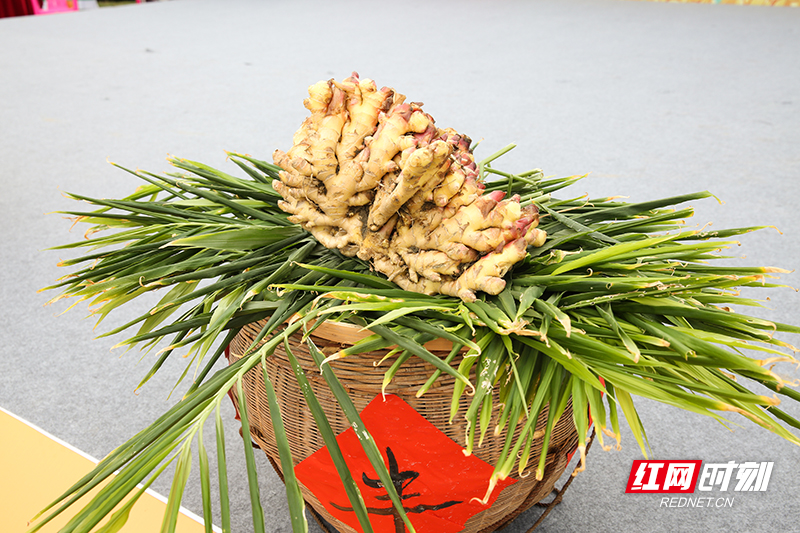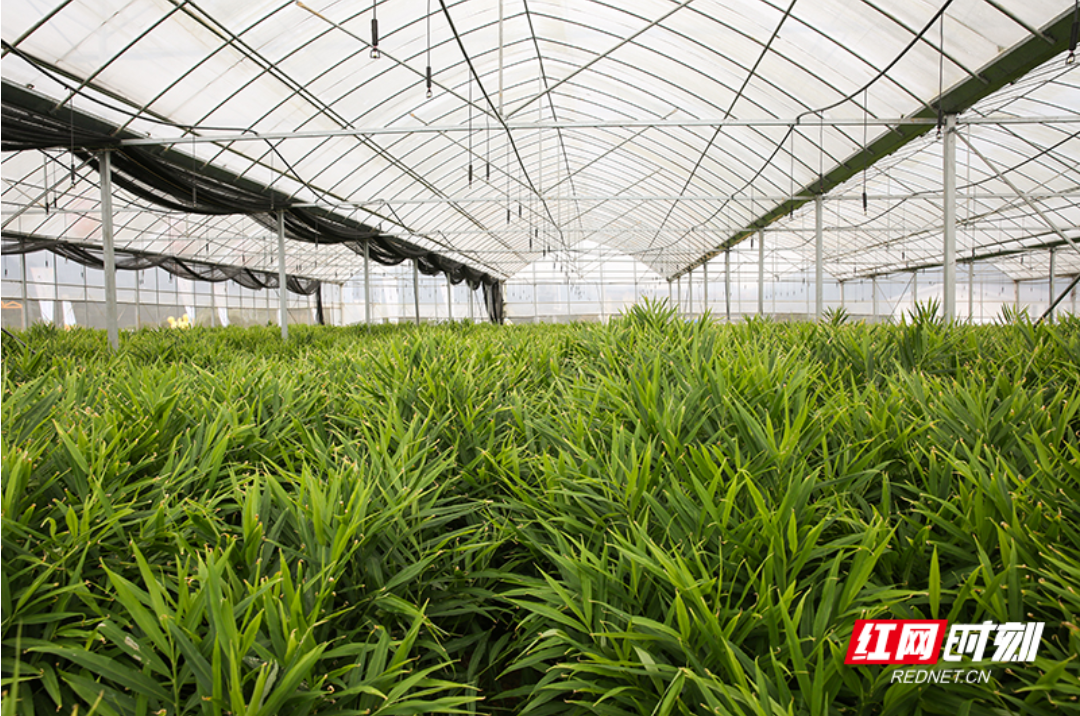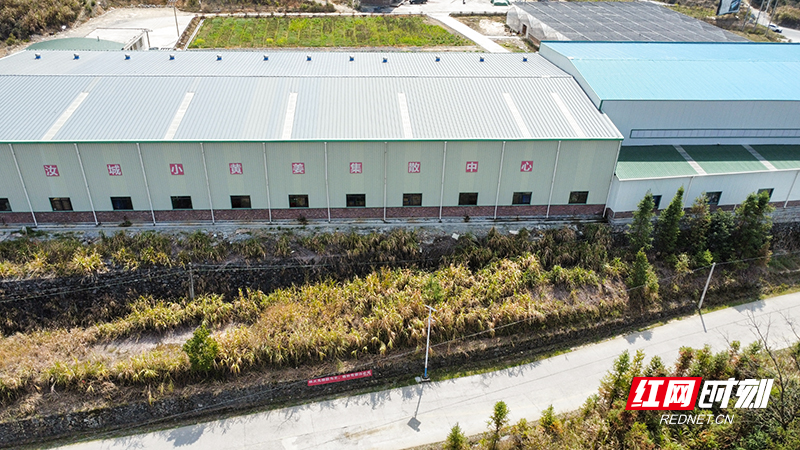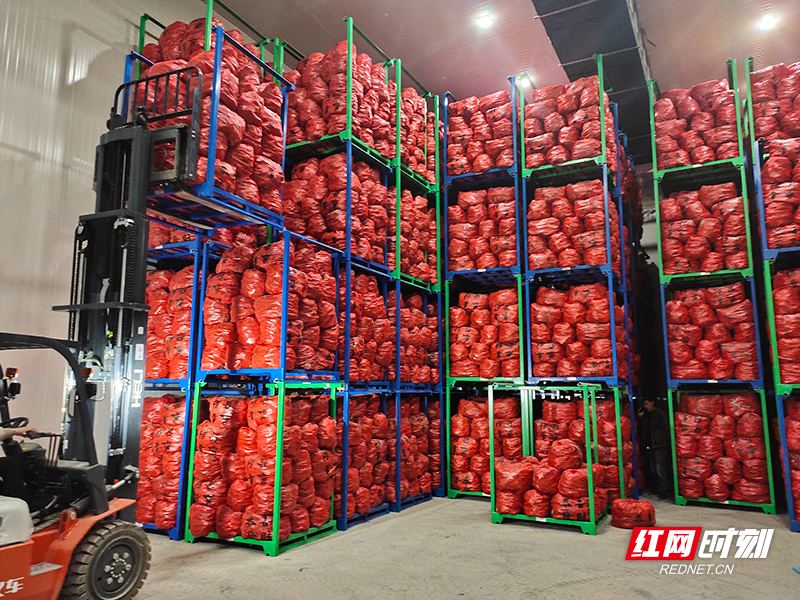Rucheng yellow ginger brings wealth to villagers
2024-02-01
Rucheng County, Chenzhou saw a bountiful harvest of small yellow ginger. In Maqiao Town, Rucheng County, which is the main producing area of small yellow ginger, busy harvest scenes can be seen everywhere.
Rucheng is located at the southern foot of the Luoxiao Mountains, and the soil and climate conditions are suitable for planting small yellow ginger. It has the traditional planting history of over one hundred years.

In recent years, the local government has taken the ginger industry as an important part for poverty alleviation and rural revitalization. It has established a ginger industrial association and adhered to the development model of “cooperative plus base plus farmer”.
Through such measures as strengthening industrial support, technological services, training and guidance, it has continuously expanded the ginger industry and increased income of villagers.
Rucheng County plants 50,000 mu (about 3,333 hectares) of small yellow ginger throughout the year, with a total industrial chain output value of over 2 billion yuan.
At the 3rd Ginger Cultural Festival of Rucheng County held last year, contracts were signed on the spot to purchase 20,000 tons of ginger. This year, Rucheng county has reached the intended sales of 80,000 tons of ginger.
Technology helps stabilize production and increase income
In a ginger base of Chongtou Village, Maqiao Town, local villagers were very happy to see the big ginger, saying, “The virus-free ginger has pleasant appearance, spicier taste and strong disease resistance.”

Yuan Junhui, head of the base and general manager of Chenzhou Chenyi Agricultural Technology Development Company, said that it is the right time to promote virus-free ginger and green cultivation technology.
For many years, influenced by long-term asexual reproduction and cultivation, the virus infection accumulation and stress resistance of Rucheng small yellow ginger seeds have decreased. Ginger blast and wilt have become common diseases, and the same land can only be rotated every other year, which restricts the healthy development of the industry.
In 2021, Yuan Junhui from Xialiu Village of Maqiao Town returned to his hometown and invested over 4 million yuan to build a small yellow ginger cultivation center, with an area of 30 mu (2 hectares).
With the guidance and assistance of experts and scholars, Yuan Junhui has successfully cultivated two generations of virus-free ginger seeds. The first generation of ginger roots have been continuously planted in greenhouses and open air, with an annual yield of over 5,700 kg per mu (0.067 hectares). The second generation of ginger has been planted in the Chongtou Base this year, with an average increase of 30% compared to traditional planting, while the amount of chemical fertilizer used has decreased by 40%.
“What’s more, originally 250 kg of ginger roots were needed per mu (0.067 hectares), but now only 25 kg of virus-free ginger roots are needed. As long as the soil remains healthy, it can also be planted next year.” Yuan Junhui said that more people come to consult and purchase virus-free ginger.
As of now, Rucheng County has built 5 green and high-yield demonstration bases with an area of 100 mu (about 6.67 hectares), and 3 continuous cropping demonstration bases for small yellow ginger, demonstrating and promoting green and high-yield technologies like shading during seedling stage, micro spraying water saving and increasing organic fertilizer application. It has built a 2,000-square-meter tissue culture and virus-free breeding center for small yellow ginger, cultivated 70,000 tissue culture seedlings, solved multiple technological bottlenecks in the industry.
Cold chain logistics helps open the big market
Song Shuanglai in Zidong Village wiped his sweat and felt relieved after 125,000 kg of fresh yellow ginger was sent to the refrigerated warehouse.

In Rucheng, good cultivation and quality of small yellow ginger are the foundation, while good sales and high value are the key to achieving high-quality industrial development.
When Rucheng small yellow ginger is harvested every year, other kinds of ginger in the whole country also flock to the market. It is inevitable to face price fluctuation due to sales competition.
In 2021, Rucheng County Xinlong Agricultural Development Company was introduced and a cold chain distribution center was built with the operation model of company plus cooperative plus family farm.
The cold storage capacity of the center is 21,000 cubic meters, with cold chain storage area, small yellow ginger cleaning area, grading and sorting area, and packaging area. It can store 15,000 tons of small yellow ginger and sell 60,000 tons of products annually.
Relying on scientific temperature and humidity regulation for storage, the cold chain loss rate can be controlled at around 5%, and the physical storage period of ginger can be extended by more than one year, enabling the ginger to be put on the market at staggered time for increased benefits.

“Last year, the average storage price of small yellow ginger was over 6 yuan per kilogram, and the price when it’s out of season generally exceeded 10 yuan, reaching a maximum of 16 yuan. The economic benefits are obvious.” Zhu Wanbing, an executive of the cold chain center. By adopting intensive purchase, unified storage, and centralized sales, it has also broke barriers in negotiations between buyers and ginger farmers, and continuously expanded sales channels.
Nowadays, Rucheng small yellow ginger is not only popular in places in Hunan province such as Changsha and Chenzhou, but also sold to other places of the country such as Guangzhou, Nanchang and Chongqing.
As the industrial chain expands, ginger associations, marketing companies and cooperatives form a consortium, with multiple entities working together to develop the ginger industry.
In all aspects of production, supply and sales, the small yellow ginger industry provides job opportunities for over 20,000 locals annually, and also promotes the vigorous development of diversified industries like ginger product processing and sales.




